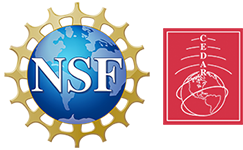Effect of ion drag on thermospheric neutral dynamics during wintertime in southern polar cap
It is well known that the thermospheric neutral dynamics is mostly governed by neutral pressure gradient and ion drag forces. Unlike the neutral pressure gradient force the ion drag force generally plays a different role depending on the geomagnetic latitudes. To the thermospheric constituents, the ionospheric plasma act as a load in the low and middle latitudes, whereas they can drive the motion of neutrals in the polar region as a drag force, resulting in sunward or anti-sunward motion in the auroral oval or polar cap region, respectively, in association with plasma convection which is induced by magnetospheric electric field. To investigate the effects of the ion drag force on the thermospheric neutral winds during wintertime, we analyzed the ion drift and thermospheric wind data obtained from the simultaneous thermospheric and ionospheric observations at Jang Bogo station (JBS), Antarctica. We found that the neutral winds are observed to be larger at around the MLT midnight than the MLT noon and it can probably be explained by the fact that the neutrals have been forced by ions longer at midnight than at noon. It is also found that the neutral winds more sensitively respond to the ion flows on the MLT dusk sector than on the MLT dawn sector, and the electron density measurement suggests that high ion density on the MLT dusk sector is responsible for this.
